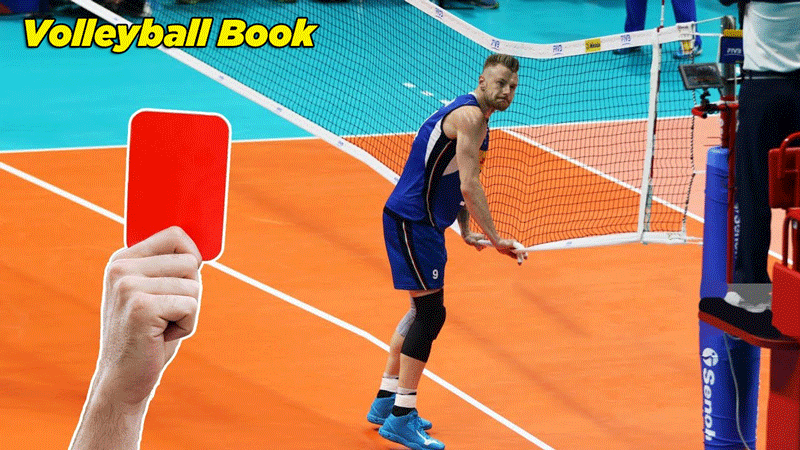Red Card in Volleyball – Essential Considerations and Strategies to Prevent
In the heat of intense volleyball matches, players exhibit remarkable agility, diving across the court for digs, delivering powerful spikes, and executing effective blocks at the net.
With little warning, the referee intervenes to restore order when someone crosses the line.
Similar to soccer, referees employ yellow and red cards to maintain control over players. A yellow card serves as a mild warning, making it a less severe measure.
However, if the dreaded red card in Volleyball is brandished by the referee, trouble looms for both you and your team. Instantly losing a point, the situation worsens as you are compelled to sit out the set.
What criteria must be met to receive a red card in volleyball?
In the heat of the moment, players may lose their cool, and inadvertent offenses towards the referees can occur.
- Engaging in disputes over a questionable decision by the referee.
- Behaving disrespectfully towards the opposing team.
- Breaching any of the game’s rules.
Rest assured, this article will guide you through all the possibilities.
So let’s start!
What Does a Red Card Mean in Volleyball?

When the referee brandishes the red card, signaling trouble for the player on the receiving end, let’s delve into what it precisely signifies in volleyball.
Receiving a red card in volleyball is akin to being ejected from the game. When issued a red card, players are required to exit the court and occupy the substitution bench for the duration of the ongoing set. Compounding the consequences, the opposing team is granted a penalty point.
In essence, receiving a red card immediately puts your team at a disadvantage, requiring them to navigate the rest of the set without your participation.
What Can Lead to a Red Card in Volleyball?

Indicating a serious offense, the red card in volleyball highlights the gravity of the situation. Despite volleyball being a forgiving sport, referees typically issue a verbal warning even before presenting a yellow card.
Receiving a red card in the game implies that there was an action leading to the offense against the referee; it doesn’t happen without cause.
The issuance of a red card in volleyball is primarily attributed to specific actions; here are the main reasons:
- Verbally abusing officials or opponents: Expressing frustration and verbally confronting referees over calls or engaging in insulting trash talk towards other players is a surefire path to earning a red card in volleyball.
- Dangerous behavior: Intentionally spiking a ball directly at another player, undercutting someone at the net, or making physical contact that poses a threat to the opposition constitutes grounds for the issuance of a red card in volleyball.
- Delaying the game: Stalling, deliberately prolonging your serve or play, or refusing to resume action upon instruction can also result in the issuance of a red card in volleyball.
- Repeated violations: Receiving a red card is also a consequence if you persistently and intentionally commit infractions, disregarding warnings from the officials.
- Cheating/deception: Feigning injury, providing false information about a fault, and other attempts to gain an unfair advantage can prompt the referee to issue a red card.
- Disobeying officials: Strictly prohibited in volleyball is the refusal to comply with instructions, orders, or disciplinary actions from referees. Such non-compliance can lead to the issuance of a red card.
- Physical aggression: Engaging in aggressive physical contact with the opposition or the referee, particularly in response to a call or the state of the game, can be a precursor to the issuance of a red card.
- Offensive conduct: Disrespecting officials or opponents through offensive gestures or insults can result in the referee penalizing you with a red card.
- Using banned substances: Immediate issuance of a red card occurs when a player is found using performance-enhancing or recreational drugs.
The primary reasons for red cards in volleyball revolve around verbally confronting referees or opponents, engaging in dangerous and unnecessary plays, and intentionally violating rules to gain an unfair advantage over the opposition. Such actions are strictly prohibited in this sport.

Red Cards vs. Yellow Cards in Volleyball?
Used to penalize dangerous, disruptive, or unsportsmanlike behaviors, both yellow and red cards differ in their meaning and consequences.

Functioning as a caution for minor misconduct, a yellow card carries no immediate impact on the game’s state. Receiving a yellow card does not result in game penalties; rather, it serves as a signal that behavioral adjustments are necessary.
In contrast, a red card is issued for major offenses, resulting in the disqualification of the player for the remainder of that set. Additionally, the team receiving the red card automatically loses a point.
While a yellow card sternly warns about infractions, it does not entail immediate punishment. In contrast, a red card signifies disciplinary action, but it is usually not issued without cause; it becomes applicable when a player demonstrates repeated offenses.
In simple terms, yellow cards serve as a mild warning, akin to a slap on the wrist, while red cards entail immediate and tangible consequences. In response to yellows, savvy volleyball teams swiftly adapt to ensure their key players stay on the court.
Conclusion
There you have it – the primary reasons a player might be handed a red card in volleyball. Displaying a loss of temper, posing a threat to others, showing disrespect to officials, and violating the rules are all definite paths to an early exit.
In intense competition, it’s crucial to uphold good conduct and fair play. Play aggressively, but prioritize safety as well.
Our thorough exploration of the red card in volleyball is aimed at addressing any questions you may have had. Best of luck!
